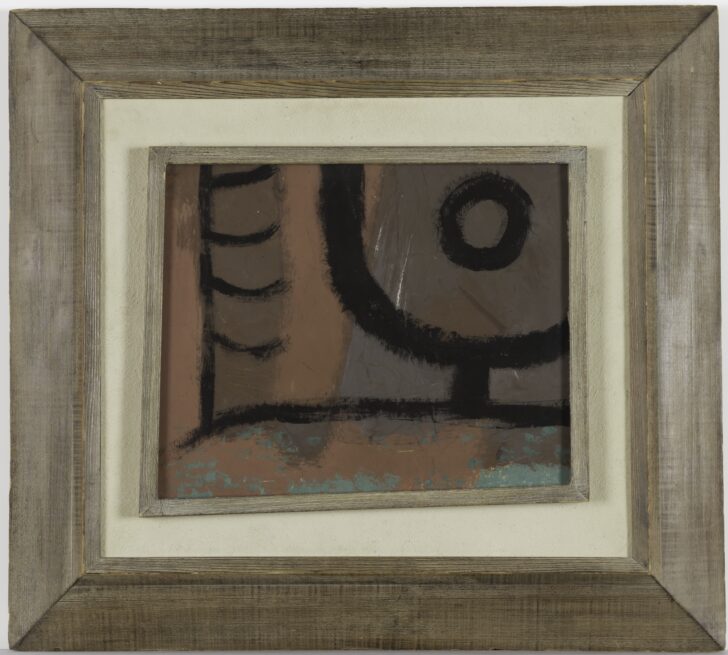Two Trees
Paul Klee

Description
In 1933, under the Nazis, Paul Klee lost his professorship in Düsseldorf and had to work in relative seclusion until his death in 1940. Klee died of a slow and wasting disease, his death mimicking the death of peace that ushered in World War II. His later paintings are unlike any of his earlier ones. The forms tend to be enclosed by thick black lines and his color is quite subdued. A monumental simplicity and boldness of composition also characterized his work of this time.
Two Trees, probably completed the same year he died, demonstrates Klee’s use of simple yet striking forms. The rich, dark colors evoke a somewhat ominous mood, perhaps reflecting the public and personal world around him. The monumental forms nonetheless communicate clearly the underlying structures of the two trees he represents. Klee’s evocation of childlike simplicity speaks in an immediate way to his viewers and Two Trees ranks among one of his most powerful and evocative late works.
Sean M. Ulmer, University Curator of Modern and Contemporary Art, for "A Matter of Degree: Abstraction in Twentieth-Century Art," November 10, 2001 - January 27, 2002
Usage Rights:
If you are interested in using an image for a publication, please visit https://umma.umich.edu/request-image/ for more information and to fill out the online Image Rights and Reproductions Request Form.